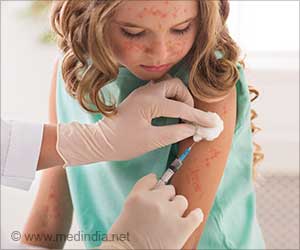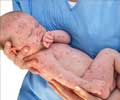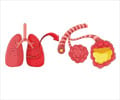- The capital of India has witnessed a notable surge in measles cases, with 543 cases reported in 2022, a stark increase compared to previous years
- Measles is a highly contagious viral disease characterized by symptoms like fever and a distinctive rash, with severe complications possible
- The rise in cases is attributed to factors like vaccination gaps and weakened surveillance during the COVID-19 pandemic, prompting intensified efforts in testing and vaccination
Moving towards the measles and rubella elimination goal in India
Go to source).
Measles Disease
Measles is a highly contagious viral disease caused by the measles virus (MeV). It is characterized by symptoms such as high fever, cough, runny nose, and a characteristic red rash. Measles can lead to severe complications, including pneumonia, encephalitis (inflammation of the brain), and death, particularly in young children and individuals with compromised immune systems. The virus is primarily transmitted through respiratory droplets from an infected person and can remain in the air or on surfaces for a period, making it highly contagious (2✔ ✔Trusted SourceMeasles and rubella in the South-East Asia
Go to source).
In 2019, there were a total of 25 reported measles cases, with no fatalities. In 2020, 15 cases were reported, and unfortunately, there were two deaths. In 2021, there were six cases reported, with one resulting in a fatality.
Spike in Measles Cases in the Capital
The reasons for a spike in measles cases in a specific region can vary, but common factors include gaps in vaccination coverage, reduced herd immunity, and increased contact among susceptible individuals.Measles outbreaks can occur when a significant proportion of the population is not vaccinated, allowing the virus to spread more easily. Inadequate vaccination rates can be due to various factors, including vaccine hesitancy, logistical challenges, or disruptions in routine immunization programs. To understand the specific reasons for a spike in measles cases in a particular area, it's essential to examine local epidemiological data and public health reports.
Measles Spike during Covid-19 Pandemic
An official from the Directorate of Family Welfare, a division of the state health department, stated that in 2022, they bolstered their surveillance efforts for measles. Before this, measles cases were only detected if a patient exhibited symptoms such as fever, rashes, cough, coryza (inflammation of the mucous membrane in the nose), and conjunctivitis.The official explained that during the COVID-19 lockdowns in 2020 and 2021, there was an internal increase in measles infections, and surveillance had weakened due to the healthcare system's focus on managing the COVID-19 pandemic.
However, in 2022, they began testing any patient who reported symptoms of fever and rashes for measles, resulting in a notably higher rate of positive diagnoses, according to the official.
Global Elimination Strategy for Measles
The global strategy for measles elimination is primarily guided by the World Health Organization (WHO) and involves several key components:High Vaccine Coverage:
Achieving and maintaining high coverage rates of measles vaccination, ideally above 95% in all communitiesTwo-Dose Strategy:
Implementing a two-dose measles vaccination schedule for all children, with the first dose administered at around 12 months of age and the second dose before school entrySurveillance and Response:
Establishing a strong surveillance system to track and investigate measles cases and outbreaks, with rapid response mechanisms in placeOutbreak Preparedness:
Developing and implementing plans for outbreak response, including mass vaccination campaigns when necessaryMass Vaccination Campaigns:
Organizing periodic mass vaccination campaigns targeting specific age groups or high-risk populationsPublic Awareness:
Running public awareness campaigns to educate communities about the importance of measles vaccination and address vaccine hesitancyHealthcare Worker Training:
Training healthcare workers to administer vaccines safely and effectively
WHO South-East Asian Region (WHO SEAR) and Measles
‘WHO SEAR’ is one of the WHO's regional offices responsible for coordinating and supporting public health efforts in Southeast Asian countries. Measles elimination is a priority for WHO SEAR, as it is for other WHO regions. Their efforts typically involve:- Monitoring and reporting on measles cases and outbreaks to track progress and identify areas of concern
- Supporting member countries in achieving and maintaining high vaccination coverage rates, especially for measles-containing vaccines
- Providing technical expertise and resources to strengthen healthcare systems, laboratory capacity, and immunization programs
- Assisting countries in responding to measles outbreaks with rapid vaccination campaigns and other control measures
- Advocating for the importance of measles vaccination and educating healthcare workers and the public about the disease and vaccines (3✔ ✔Trusted Source
Progress Toward Measles Elimination — South-East Asia Region, 2003-2020
Go to source)
- Moving towards the measles and rubella elimination goal in India - (https://www.who.int/india/news/feature-stories/detail/moving-towards-the-measles-and-rubella-elimination-goal-in-india)
- Measles and rubella in the South-East Asia - (https://www.who.int/southeastasia/health-topics/measles)
- Progress Toward Measles Elimination — South-East Asia Region, 2003–2020 - (https://www.cdc.gov/mmwr/volumes/71/wr/mm7133a2.htm)
Source-Medindia












